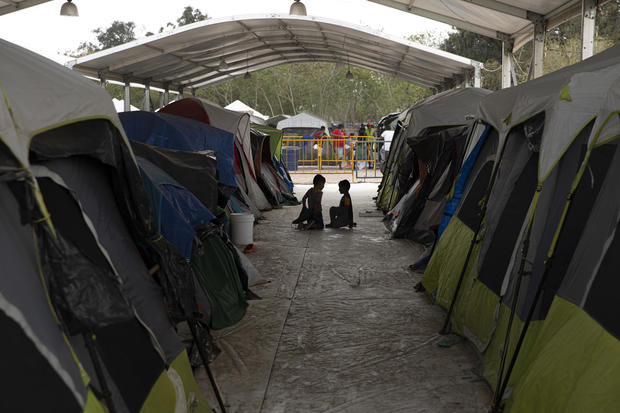The Childen's Crusade at the U.S.-Mexico Border
"I heard there was an opportunity to come.""I heard on the news that mothers with their babies and minors could come.""[My baby's father?] He abandoned us. We have nothing."Mayra, 17, Guatemalan refugee"[It's nonsense that more migrants were coming because I am] a nice guy.""They come because their circumstance is so bad."U.S.President Joe Biden
 |
| A young girl carries a child inside a U.S. Customs and Border Protection holding area in El Paso, Texas. Lucas Jackson/Reuters |
Since
October of 2020, roughly two-thirds of unaccompanied minors taken into
custody at the border of Mexico and the U.S. have travelled from
Guatemala, El Salvador and Honduras. The remainder for the most part are
Mexican children. Currently the number in the custody of a
U.S.Department of Health and Human Services (HHS) refugee office
managing a government shelter system stands at 9,200. Most of these
children are in their teens, but there are hundreds under 12 years of
age.
Among
the unaccompanied children many hope to become reunited with family
members. Many others have left their homes to escape violence and
poverty, a fact well understood by immigration experts. Slumping
economies caused by the COVID-19 pandemic has been the cause of many
more migrants leaving their home countries. Hurricanes have recently
battered Central America.
 |
| A young asylum seeker arrives with her family at a bus station after being released by US border patrol in Brownsville, Texas, on 25 February. Photograph: John Moore/Getty Images |
Under
the new Biden administration, a recent change in policy permits
unaccompanied children into the United States even while single adults
and families crossing illegally continue to be expelled. Under the
previous Trump and Obama administrations in 2019 and 2014, similar
spikes in migrant crossings from Mexico to the U.S. also occurred.
While
the potentially dangerous trip to the border is undertaken by some
children on their own, or through a smuggler, in alternate instances
children travel with older siblings, grandparents or other relatives and
they can be separated by Customs and Border Protection once caught at
the border.
Upon
being taken into custody the children are meant to be transferred out
of Customs and Border Protection to shelters operated by Health and
Human Services within a 72-hour period. With limited shelter space,
however, border detention centres may see children remaining for longer
periods, and this is what is happening at the present time, due to an
influx of greater numbers.
 |
Originally constructed to house adult men for short periods of time, the border stations have the potential to pose COVID-19
health risks to children and staff alike, in overcrowded conditions.
When they gain the shelters, children can be released to parents or
other sponsors or alternately placed in foster care where asylum can be
pursued or alternate ways sought to remain in the U.S. -- other than to
be deported.
Of
the approximately 200,000 unaccompanied children entering the country
from fiscal year 2014 to fiscal year 2019, four percent were removed,
according to U.S. Department of Homeland Security data. Several
emergency shelters for children in Texas have been opened by the
administration, along with plans to utilize the Dallas convention centre
for up to three thousand migrant teen boys to be housed.
Looking
to the longer term, the Biden administration is planning to establish
programs permitting Central Americans to apply for refugee status in the
United States from their home countries, while also making an effort to
improve conditions in those countries. Allied with that effort, a
program has been restarted allowing certain Central American children
with parents living lawfully in the U.S. to apply for a refugee
resettlement from their home countries.
 |
| A U.S. Border Patrol agent releases a young asylum seeker with her family at a bus station on February 25 in Brownsville, Texas. (CNN) |
Labels: Central American Refugees, child Migrants, El Salvador, Guatemala, Honduras, Migrants, United States

<< Home